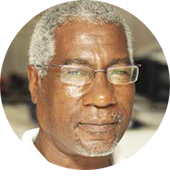
With deaths reported daily and no end in near sight to the deadly results of gunplay leaving new families mourning, Saint Lucians will be absolutely surprised – even disbelieving — to learn that Saint Lucia isn’t even named among the top 136 countries with the worst crime rates in the whole wide world.
Likewise, it would also surprise the average Caribbean citizen to find out that four Caribbean nations are among the Top 10 with the worst crime rates globally.
But then, it all has to do with how crime is seen and how it’s measured – two totally different realities in a region where people measure by what they see, feel and hear – and not by numbers.
By the World Population Review’s (WPR) measurement, “Overall crime rate is calculated by dividing the total number of reported crimes of any kind by the total population, then multiplying the result by 100,000 (because crime rate is typically reported as X number of crimes per 100,000 people).”
WPR notes that: “Crime rates vary greatly from country to country and are influenced by many factors. For example, high poverty levels and unemployment tend to inflate a country’s crime rate. Conversely, strict police enforcement and severe sentences tend to reduce crime rates.”
And it goes on to point out: “There is also a strong correlation between age and crime, with most crimes, especially violent crimes, being committed by those ages 20-30 years old.”
By that yardstick, WPR finds “The overall crime rate in the United States is 47.70” and “The violent crime rate in the United States has decreased sharply over the past 25 years…”
By that same measure, WPR’s 2023 global crime report states, “Some of the world’s lowest crime rates are seen in Switzerland, Denmark, Norway, Japan, and New Zealand” because “each of these countries has very effective law enforcement; and Denmark, Norway and Japan have some of the most-restrictive gun laws in the world…”
Take a closer look:
WPR lists seven Caribbean and South American countries among the ten highest crime rates globally (per 100,000 persons) as follows (in that order): 1. Venezuela (83.76), 2. Papua New Guinea (80.79), 3. South Africa (76.86), 4. Afghanistan (76.31), 5. Honduras (74.54), 6. Trinidad and Tobago (71.63), 7. Guyana (68.74), 8. El Salvador (67.79), 9. Brazil (67.49) and 10. Jamaica (67.42).
Now, will any Caribbean or Latin American citizen believe only three other countries have higher crime rates and two are in Africa, one in Asia – and none in Europe or North America?
But, believe or like it, or not, that’s the WPR’s measurement – and the tale of the tape follows:
1. Venezuela: It’s high crime rates have been attributed to reasons including “government corruption, a flawed judiciary system, and the breakdown of the Rule of Law.”
2. Papua New Guinea: “Violent crime is primarily fueled by rapid social, economic, and political changes,” as well as gang wars, organized crime, drug and human trafficking…
3. South Africa: “South Africa has a “high rate of assaults, rape, homicides, and other violent crimes” attributed to high levels of poverty, inequality, unemployment, and social exclusion “and the normalization of violence and rape…”
4. Afghanistan: “Crimes include corruption, assassinations/contract killings, drug trafficking, kidnapping, and money laundering, robbery and assault.
5. Honduras: “Its peak of violent crime was in 2012, when the country experienced about 20 homicides per day, typically carried out by gun-toting gangs and is easy point of entry for the illegal drug trade…”
Trinidad and Tobago: Crimes include gang activities, drugs, economic recession, “a great demand for illegal weapons”, drug trafficking, pickpocketing, assault, theft, and fraud…
7. Guyana: “Use of weapons by criminals is common, domestic violence, armed robberies hotel break-ins, robberies and assaults….”
8. El Salvador: “Organized crime is a massive problem, contributing to most social violence from gangs with an estimated 25,000 members, 9,000 in prison, and about 60,000 young people in separate youth gangs, which dominate the country. Many gangs have also cultivated relationships, and in some cases territorial disputes, with drug traffickers. In addition to gangs, high unemployment rates and low wages in El Salvador have pushed families into marginalized areas where crimes are common. Property crimes, such as robbery, theft, and theft of vehicles, are the most common.
9. Brazil: It’s “most massive problem is organized crime, which has expanded in recent years, and violence between rival groups is a common occurrence. Drug trafficking, corruption, and domestic violence are all pervasive issues…”
10. Jamaica: “Jamaica is plagued by government corruption, gang activity and high levels of violent crime, including sexual assault. The U.S. describes the Jamaican police force as understaffed and possessed of limited resources and travelers are advised to especially avoid Spanish Town and parts of Kingston and Montego Bay.”
Any fair assessment of the tale of WPR’s tape will conclude that crime is concentrated only in small and poor countries with non-white populations, facing economic problems and with high levels of unemployment; and that effective policing is only possible in European. North American and other majority-Caucasian societies.
The WPR’s yardstick doesn’t fit most CARICOM nations, especially those like Saint Lucia and the other five members of the OECS (Organization of eastern Caribbean states) — and thus all will be glad they didn’t measure-up well enough for qualification.
But this is hardly reason for celebration as it’s only the measurement mechanism that’s in question, while crime continues to evolve across the region, where US-made AR-15s have replaced the Russian AK-47 as the weapon of choice for the more-organized gangs.
Again, this article was being written, report came of another two violent deaths in Saint Lucia, where too many people have literally become immune to gunfire and reports of violent deaths.
So, the sixty-million-dollar question still remains: How to measure crime?
But most Caribbean citizens would say, like the song by Simon and Garfunkel: “The answer, my friend, is blowing in the wind…”





